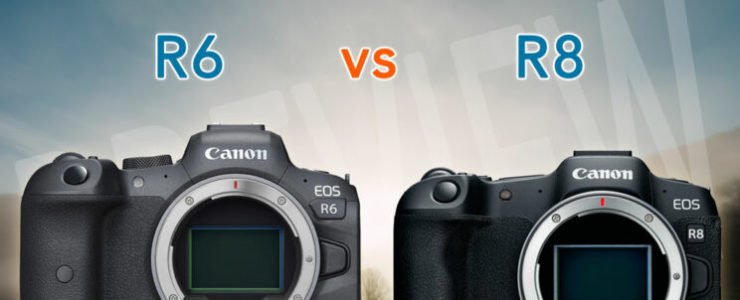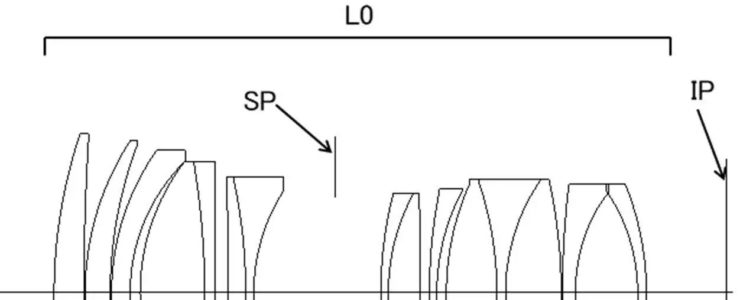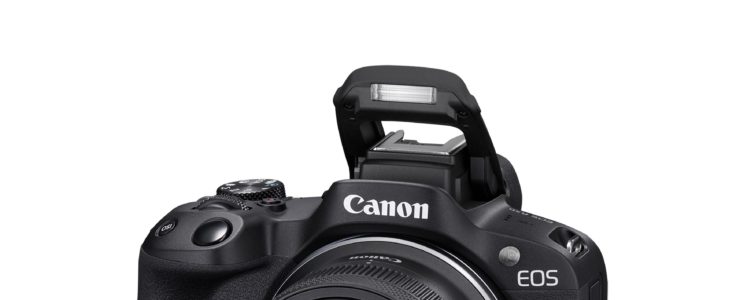Follow us:
Canon EOS R6 vs EOS R8 Comparison Review, And 10 Differences
Here is a Canon EOS R6 vs EOS R8 comparison review, and a highlight of the 10 main differences.
Canon EOS R6 at a glance:
- 20MP Full-Frame CMOS Sensor
- DIGIC X Image Processor
- 4K60p and FHD 120p 10-Bit Internal Video
- Sensor-Shift 5-Axis Image Stabilization
- 12 fps Mech. Shutter, 20 fps E. Shutter
- Dual Pixel CMOS AF II with 1053 Points
- 0.5″ 3.69m-Dot OLED EVF
- 3″ 1.62m-Dot Vari-Angle Touchscreen LCD
- Subject Tracking with Deep Learning
- Dual SD UHS-II Memory Card Slots
Canon EOS R8 at a glance:
- 24.2MP Full-Frame CMOS Sensor
- 4K60p 10-Bit Internal Video, Canon Log 3
- 2.36m-Dot OLED Electronic Viewfinder
- 3.0″ 1.62m-Dot Vari-Angle Touchscreen
- Dual Pixel CMOS AF II
- 40 fps Electronic Shutter
- Movie Digital IS
- Vertical Movie Mode
- Microphone Input, Headphone Output
- Multi-Function Shoe, Wi-Fi & Bluetooth
Coming from our friends at Mirrorless Comparison, here is a neat Canon EOS R6 vs EOS R8 review. The 10 main differences are:
- Image Quality: The dynamic range and high ISO performance are very similar between the two cameras. The primary distinctions lie in the R8’s additional 4MP and its skin tone rendering with in-camera JPGs.
- Movie Capabilities: Both cameras offer the same 10-bit internal recording quality (dynamic range, ISO), but the R8 has fewer overheating issues and doesn’t crop the sensor in 4K. (Although the 1.07x crop on the R6 is hardly a significant concern.)
- Image Stabilisation: The R6 features 5-axis in-body stabilization, which extends the usability of slow shutter speeds for still photos and produces steadier footage while walking. That said, pair the R8 with a quality IS lens, and you’ll get more out of it than you would initially think.
- Autofocus: The R8 boasts more advanced subject detection software and performs better in low light. Both cameras excel in bird photography.
- Shutter and Continous Shooting: the R8 is faster with the electronic shutter (40fps vs 20fps) but doesn’t have a full mechanical shutter, only the EFCS (Electronic-First Curtain Shutter).
- Extra Features: The R8 includes Dual Pixel RAW, Focus Stacking, Breathing Compensation, and a USB plug-and-play webcam function.
- Design: The R8 is lighter and more compact, whereas the larger R6 offers several advantages such as a bigger battery, additional buttons, a larger grip, and an improved viewfinder.
- Viewfinder and LCD: The R6 boasts a larger viewfinder with greater resolution, particularly convenient for those wearing glasses. Both cameras share the same touch-sensitive, vari-angle rear LCD.
- Cards and Battery: The R6 is equipped with two card slots and a larger battery, providing extended longevity for both stills and video.
- Price: The R6 carries a higher price tag when purchased new, though the discrepancy isn’t substantial in some regions. Considering second-hand prices, the R6 often becomes the more favorable choice.
Read the full and exhaustive Canon EOS R6 vs EOS R8 review at Mirrorless Comparison, it comes with charts, ISO comparison and everything your pixel peeping heart might wish. Or you can watch the video below.






